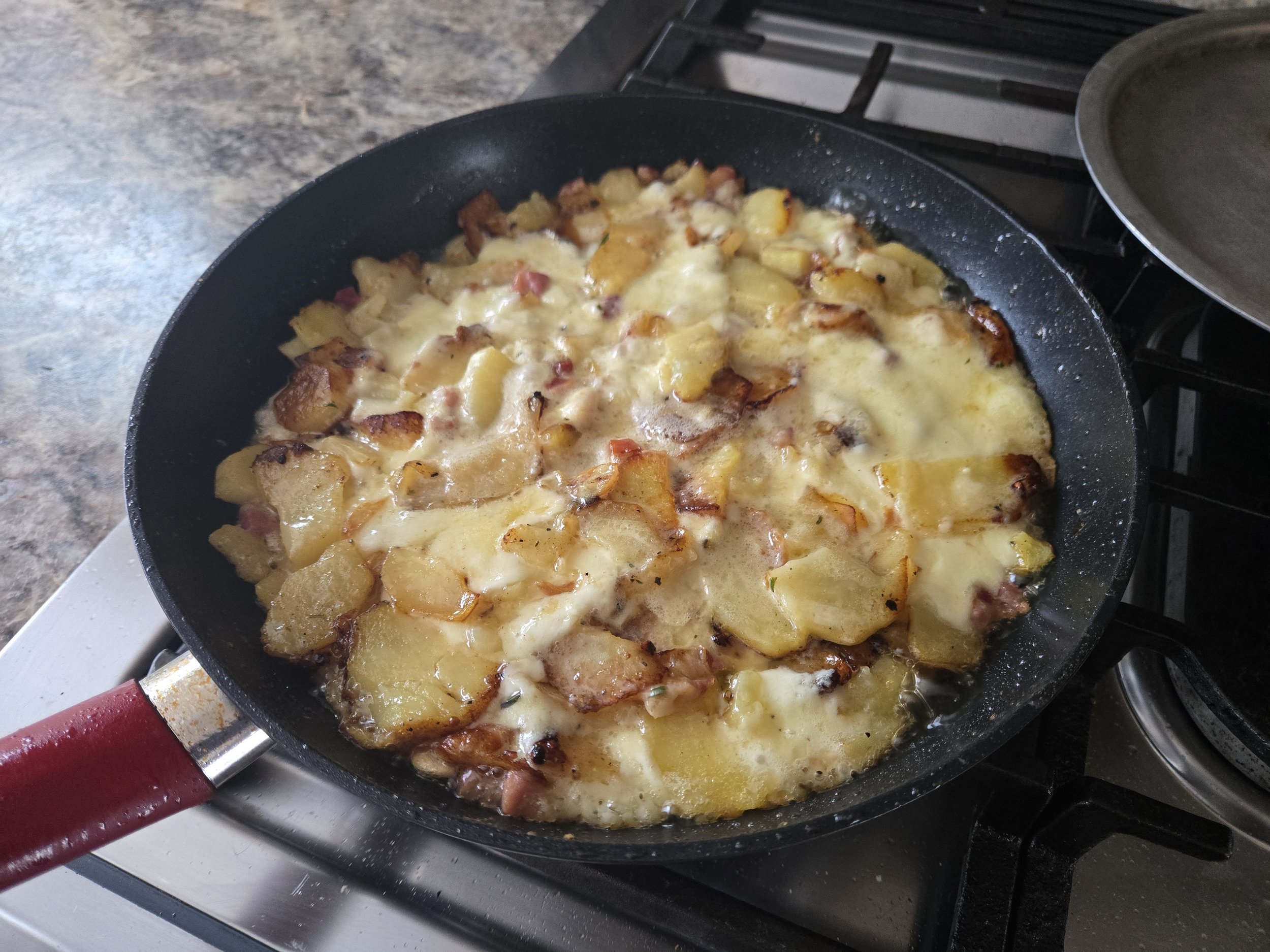Lamb Cotelettes
Inspired, I decided to cook lamb côtelettes with olives and pastis, alongside Monsieur Chabrier’s eggplant and tomatoes, all perfectly paired with a velvety red Bandol. One bite brought the warmth and sunshine of Provence, melting away the chill of a snowy winter’s day.
Truffade: A Taste of Rustic French Comfort
Truffade is a hearty and iconic dish that embodies the culinary soul of France's Auvergne region. Born as a staple for shepherds and farmers, this rustic creation highlights the simplicity and resourcefulness of countryside cooking. Made with tender potatoes, creamy cheese, smoky bacon, and a touch of garlic, Truffade is traditionally prepared in a cast-iron pan and often served alongside a crisp green salad, grilled sausages, or slices of locally cured ham.
A French Classic: Fricassée of Chicken with Morels and Vin Jaune
Once a year, I find myself drawn to making this dish—a harmonious symphony of wild mushrooms, chicken, and cream. What makes it truly special is the way the nutty, sherry-like notes of Vin Jaune dance with the earthy richness of morels, creating a flavor combination that feels both indulgent and deeply satisfying.
Rabbit Schnitzel
I'm quite fond of rabbit, though I don't cook it very often anymore. Preparing rabbit can be tricky as it tends to dry out with traditional cooking methods and can turn to mush when cooked in a circulator. A simple and virtually fail-safe method I enjoy is making Rabbit Schnitzel. This technique allows the rabbit to cook in just five minutes, resulting in a delightful crunch that nicely complements the tender meat. You can serve the schnitzel plain with a squeeze of lemon or pair it with your favorite sauce.
Daube of Pork Cheeks
This Provençal pork stew is ideal for chilly days when you crave a comforting meal. Traditionally, daubes were prepared in the fading embers of a wood fire using a distinctively shaped pot known as a daubière. The extended cooking time and the pot’s rounded form facilitate a convection process, where heat rising from the bottom transforms into steam, meets the cooler top, and condenses back down onto the simmering meat. This cycle helps the collagen in the braising meats convert to gelatin, giving the final dish a smooth and silky texture.
Jarret of Pork au Chablis
Lightly smoked pork jarret poached in Chablis is a traditional farmhouse dish hailing from the Burgundy region of France, known for its rich culinary heritage.






